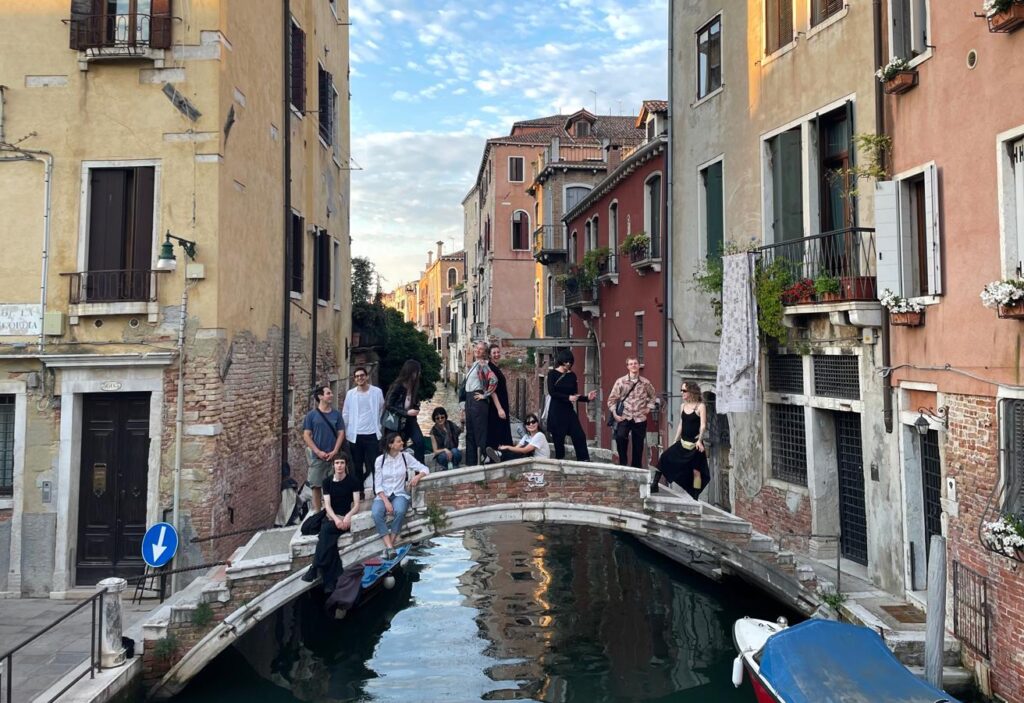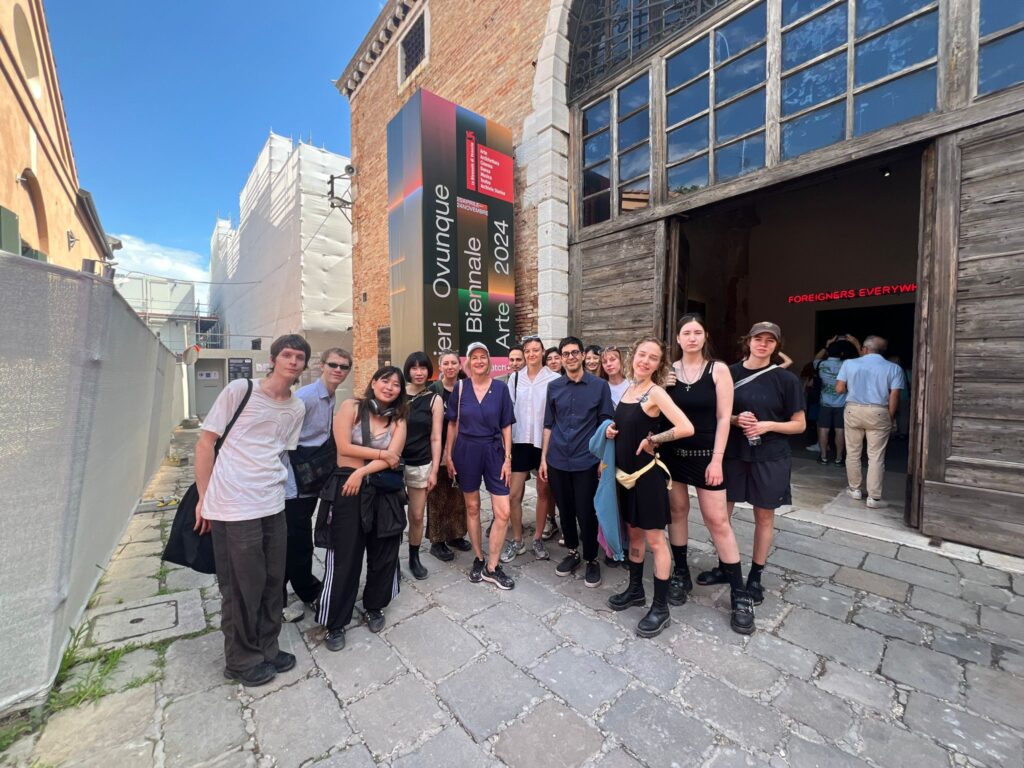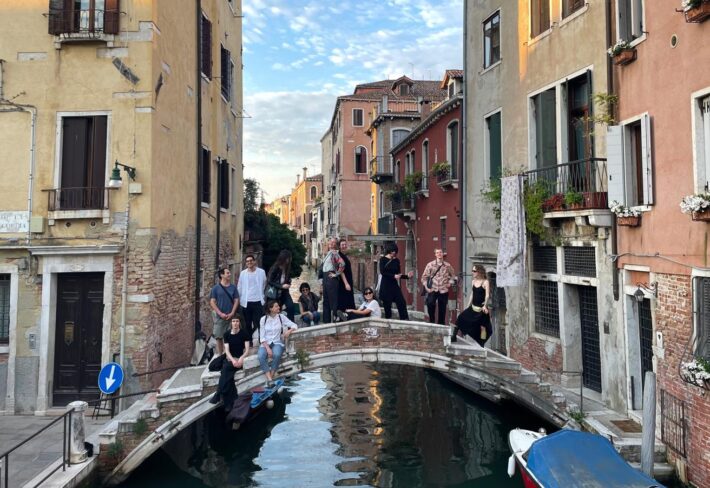
This seminar, which took place from June 24–28 in Venice, offered students a unique chance to explore and discuss the 60th Venice Biennale titled Stranieri Ovunque (“Foreigners Everywhere”), curated by Adriano Pedrosa.

The exhibition spanned across the Central Pavilion (Giardini) and the Arsenale, featuring two primary sections: the Nucleo Contemporaneo and the Nucleo Storico. The Nucleo Contemporaneo delved into the concept of the “strange yet familiar,” examining the art of marginalized groups such as queer and indigenous artists as a reflection of their identities and societal struggles. The Nucleo Storico showcased artworks from 20th century Latin America, Africa, the Middle East, and Asia, and exhibited lesser-known modernist movements from these regions; it challenged the Eurocentric narrative of art history, exploring the global influence of European modernism, which was often intertwined with colonialism.

Since its inception in 1895, the Biennale has been a platform for contemporary art and has expanded to include various art forms such as architecture, dance, film, music, and theater. Throughout this seminar, the students deeply engaged with the exhibition and with Venice’s unique context as a city shaped by water. Additionally, we visited the exhibition “Pierre Huyghe: Liminal” at the Palazzo Grassi, part of the Pinault Collection, and explored Ocean Space, a center for fostering ocean literacy and marine research through contemporary art. This seminar engaged in critical thinking, provided exposure to diverse artistic perspectives, and offered an immersive exploration of the intricate and multifaceted Venice Biennale.

